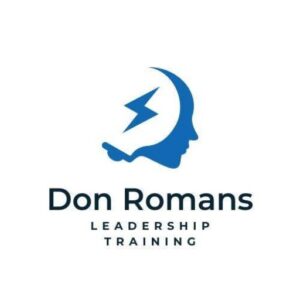When it comes to training new employees, it’s a necessary process that helps them get started in their new job. The goal is to give them the proper knowledge and skills to do well and fit in with the company. There are many things to consider, from learning job-specific things to developing critical soft skills like communication and teamwork. This article discusses the different aspects of training a new employee and gives tips for successful onboarding.
Understanding the Onboarding Process
Starting a new job can be both exciting and overwhelming for new employees. Therefore, organizations need a well-designed onboarding process to ensure a smooth transition and set new employees up for success. An effective onboarding process involves providing new employees with the necessary support, resources, and training to integrate into the organization and perform their roles effectively.
Preparing for Onboarding
A. Planning and Organization
Advance planning is essential to create a successful onboarding experience. HR departments and hiring managers are crucial in coordinating the onboarding process. They need to have a clear plan outlining the specific steps and activities that will take place during the onboarding period. This includes scheduling orientation sessions, allocating resources, and assigning mentors or coaches.
B. Gathering and Preparing Resources
New employees must have all the necessary resources ready for them to hit the ground running. This includes providing a designated workspace, ensuring access to the required equipment and software, and familiarizing them with documentation such as employee handbooks, policies, and procedures. Clear and accessible documentation is crucial for new employees to understand the organization’s expectations and guidelines.
Onboarding Activities
A. Orientation and Company Culture
Orientation sessions are vital in introducing new employees to the organization’s mission, vision, and values. This is an opportunity to provide an overview of the company’s history, structure, and key stakeholders. Additionally, it is essential to emphasize the company culture, team dynamics, and the employee’s role in contributing to the organization’s success. Creating a welcoming and inclusive environment during orientation can help new employees feel connected and motivated.
B. Job-Specific Training
Once the new employee understands the company culture, it is time to provide job-specific training. This training should equip employees with the skills, knowledge, and tools they need to perform their job effectively. Training methods such as shadowing experienced employees, online courses, or hands-on experience, can be utilized. The training should be tailored to the employee’s role and provide opportunities for practice and feedback.
C. Developing Soft Skills
In addition to job-specific training, developing soft skills is essential for new employees to thrive in their roles. Soft skills, such as effective communication, teamwork, problem-solving, and time management, are valuable across various job functions. Workshops, coaching sessions, and feedback mechanisms can enhance these skills. Providing opportunities for new employees to practice and receive guidance in developing these skills will contribute to their long-term success.
Mentorship and Support
Mentorship and support are critical in helping new employees navigate their initial period in the organization. Assigning a mentor or coach can provide guidance, support, and a safe space for new employees to ask questions and seek advice. In addition, regular check-ins with mentors or coaches can help identify challenges or concerns and provide timely feedback to ensure the new employee’s growth and development.
Continuous Learning and Professional Development
The onboarding process should continue after the initial training period. Encouraging continuous learning and professional development is essential for new employees to stay engaged and motivated. Organizations can provide ongoing learning opportunities such as training programs, workshops, and conferences. Creating a culture of continuous learning fosters employee growth. In addition, it helps them stay up-to-date with industry trends and advancements.
Conclusion
In conclusion, a well-structured onboarding process is crucial for successfully integrating and developing new employees. By providing a comprehensive orientation, job-specific training, opportunities for developing soft skills, mentorship, and support, and promoting continuous learning, organizations can set their new employees up for long-term success. In addition, investing time and effort in training new employees benefits the individual and contributes to the organization’s overall success.
FAQ Section
Q: How long should the onboarding process last?
A: The duration of the onboarding process can vary depending on the complexity of the role and the organization’s specific requirements. However, onboarding typically spans from a few weeks to a few months, with regular check-ins and support provided throughout.
Q: What if the new employee doesn’t adapt well during onboarding?
A: If a new employee struggles to adapt, providing additional support and guidance is essential. This can include assigning a mentor or coach, addressing concerns or challenges, and providing extra training or resources. In addition, open communication and regular feedback are vital to helping the employee overcome difficulties and succeed.
Q: Is onboarding only for entry-level positions?
A: No, onboarding benefits employees at all levels, including those in senior or leadership positions. Experienced professionals need time to acclimate to a new organization’s culture, processes, and expectations. Tailoring the onboarding process to the specific needs of each employee is essential for their success and integration within the organization.
Q: How can technology be leveraged in the onboarding process?
A: Technology can play a significant role in streamlining the onboarding process. Online platforms can provide interactive training modules, facilitate communication between new employees and mentors, and track the progress of the onboarding process. In addition, digital resources and tools can make information more accessible and allow for more efficient and consistent onboarding experiences.
Q: Is onboarding a one-time event or an ongoing process?
A: Onboarding is not a one-time event but an ongoing process. While the initial onboarding period focuses on getting new employees up to speed, continuous learning, support, and professional development should be provided throughout their tenure. In addition, regular check-ins, feedback sessions, and opportunities for growth and advancement should be incorporated to ensure employees’ long-term success and satisfaction.
Suggested Reading: Manager-As-A-Coach Strategies to Lead Your Team


Comments
2 responses to “Training New Employees for Success: Mastering Onboarding”
interesting post
interesting news